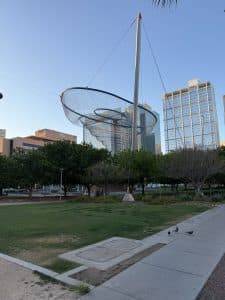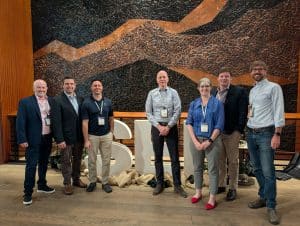Author: Matt Sweeney, PE, SE, Associate | Digital Design Manager
I’m currently serving as the Vice-Chair of the Digital Design Committee within SEI, where our goal is to advance the practice of structural engineering through technology and digital innovation. The annual Structures Congress is one of our key venues for sharing the initiatives, discussions, and insights from our committee’s work.
Held this year in Phoenix, Arizona, Structures Congress—SEI’s annual flagship event—is always an inspiring opportunity to engage with both the technical and professional aspects of structural engineering.

If you’re like me, sometimes all the acronyms get confusing. To help clear things up, here’s a quick summary: SEI, or the Structural Engineering Institute, is a technical institute within ASCE (the American Society of Civil Engineers), focusing on technical standards, research, education, and advancing structural engineering practice. NCSEA, the National Council of Structural Engineers Associations, complements SEI by emphasizing professional practice, advocacy, licensing, and support for local structural engineers associations. They’re separate but highly collaborative—both critical for the health of our profession.
This year, our committee hosted two lively sessions:
- An interactive BIM Execution Planning session, where we facilitated thoughtful discussions on best practices, challenges, and improvements in how BIM is utilized across structural engineering.
- A debate-style discussion on AI in structural engineering, structured around three key areas: current applications of AI, privacy and ethics considerations, and strategies for integrating AI into daily workflows. One surprising takeaway was how many engineers have yet to explore even basic AI and LLM tools. There’s clearly enormous potential for AI to assist with feasibility studies, preliminary design, and routine tasks—once we adjust our mindset and workflows.

Because we were still preparing for our sessions, I didn’t attend as many other presentations as I usually would. However, I did have the opportunity to spend additional quality time with the incredibly talented folks from our committee—always the highlight of attending the conference. That unstructured time with colleagues who are leading impressive work at their firms, thinking outside the box, and providing unique perspectives is truly invaluable.
Among the sessions I did attend, a few stood out:
- The ongoing effort to transform ASCE 11-99—a guide originally published to provide recommendations on performing condition assessments of existing structures—into a full standard. This update aims to reduce subjectivity, offer clearer guidance on evaluating structural conditions, and create enforceable standards that practitioners can consistently apply.
- An eye-opening case study about litigation surrounding a failed modular retaining wall, emphasizing the importance of clear documentation, communication, and intentional document retention policies—small oversights can become significant in court. These types of sessions are a regular part of Structures Congress and always provide great insights. Even when you feel confident about your practice, there are almost always lessons or reminders that can help sharpen your professional judgment and approach.
- The closing plenary, delivered by a sociologist, reminded us of the importance of storytelling and human connection in engineering. Numbers alone rarely convince people (although they help)—understanding and clearly communicating the “story” behind our designs and recommendations is critical for gaining trust and buy-in.
Overall, the Structures Congress reinforced the idea that structural engineering is as much about people, relationships, and clear communication as it is about technical skill. I’m excited to carry this perspective forward as I transition into the Chair role of the Digital Design Committee, knowing there’s plenty to live up to, but also feeling genuinely excited about the journey ahead.

